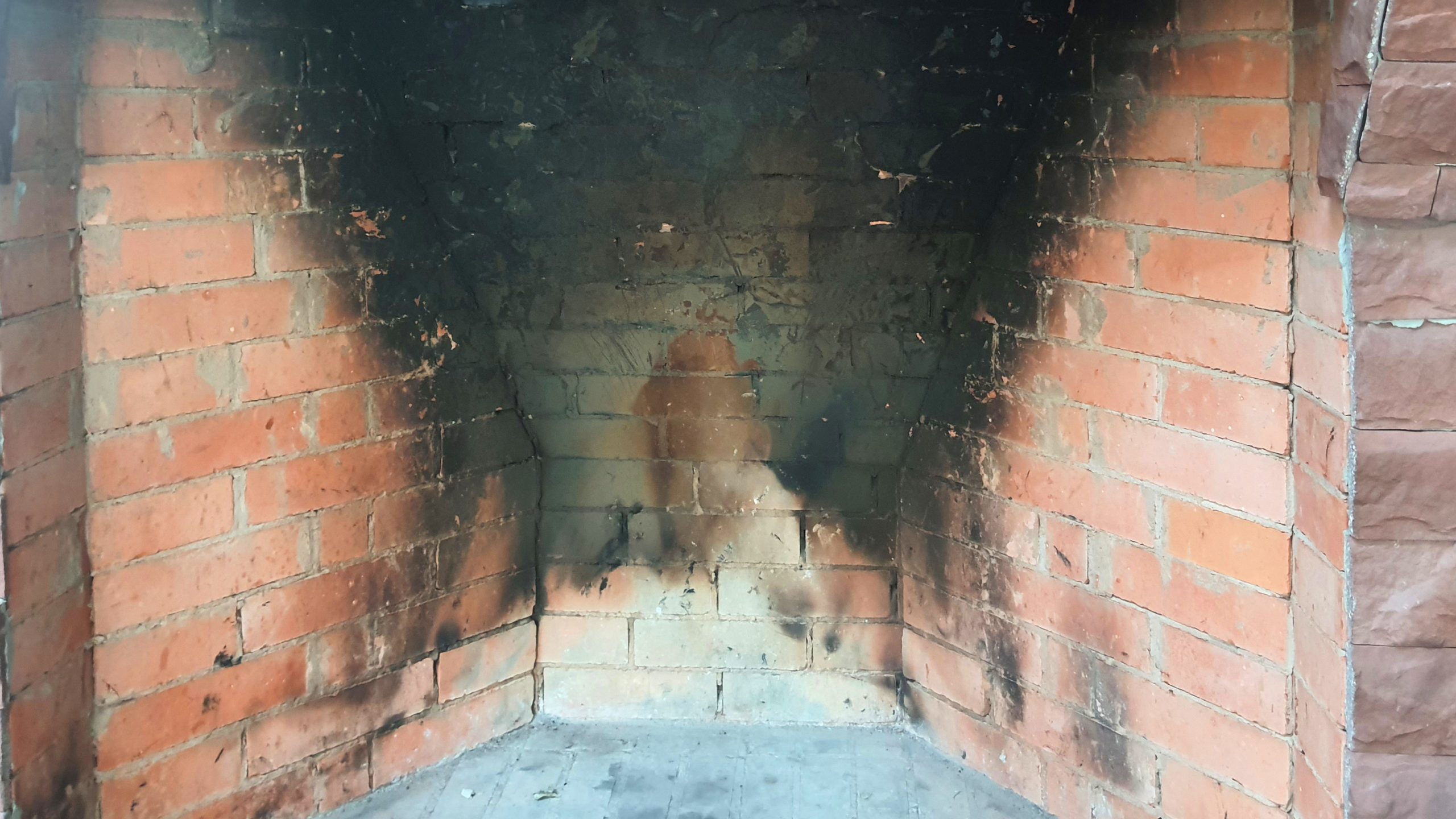As cooler weather sets in, homeowners across Michigan start lighting their fireplaces to stay warm and cozy. But what many don’t realize is that a hidden threat could be building up inside the chimney. Creosote, a dark, tar-like residue left behind by burning wood, is highly flammable and one of the leading causes of home fires each fall.
We’ve put this guide together to help you understand what creosote is, how it increases your risk of a chimney fire, and what you can do to prevent it. With a little awareness and routine maintenance, you can enjoy your fireplace safely and protect your home from unnecessary fire damage.
What is Creosote?
If you’ve ever noticed a black substance found in a fireplace or seen dark buildup along the chimney walls, that’s creosote. It forms when wood smoke cools as it travels up the chimney, causing unburned particles and vaporized tar to stick to the flue lining. Over time, these layers harden and accumulate, reducing airflow and creating dangerous conditions.
Creosote comes in three stages. The first is a flaky soot that can be brushed away easily. The second is a thicker, tar-like layer that’s more stubborn but still removable. The third is a hard, glazed coating that clings tightly to the chimney walls and is extremely difficult to clean. This final stage is also the most dangerous because it can ignite easily under high heat, turning a relaxing fire into a serious emergency.
How Flammable Is Creosote and Why It Matters
Creosote is one of the most flammable substances found in the home. It can ignite at temperatures as low as about 450 degrees F, which is about the same as the chimney draft from a good fire.
When creosote burns, it produces intense flames that can shoot up the flue and spread into the attic or nearby walls within seconds.
How to Tell If You Have Creosote Buildup In Your Chimney
Creosote buildup often develops gradually, which means homeowners don’t always notice the warning signs right away. Paying attention to small changes can help you spot the problem before it becomes dangerous.
- Persistent smoke odor: Even when the fireplace isn’t in use, a strong, smoky smell can signal trapped creosote.
- Dark stains or deposits: A black, shiny residue around the firebox, damper, or chimney walls indicates buildup.
- Reduced draft: If your fire burns sluggishly or smoke lingers in the room, the flue may be partially blocked.
- Falling debris: Flakes or bits of soot near the hearth are a clear sign of accumulation inside the chimney.
- Visible glaze: A thick, glossy layer inside the flue means creosote has reached a dangerous stage and needs professional cleaning.
How To Prevent Black Buildup In Your Chimney
Preventing creosote buildup is simple with the right maintenance routine. Start by scheduling an annual chimney inspection and cleaning before the heating season begins.
Certified chimney sweeps have the tools and experience to remove buildup safely, ensuring your system vents properly and reduces the risk of fire. When burning wood, use only dry, seasoned logs. Wet or green wood produces more smoke and increases creosote accumulation.
Keep the fire burning hot enough to promote complete combustion, and always make sure the damper is open for proper airflow. Installing a chimney cap helps keep out debris and moisture that can worsen buildup.
Chimney Fire? Here’s What to Do
If you suspect a chimney fire, seconds count.
- Get everyone out of the house.
- On your way out, close fireplace doors, air intake vents, and flue, if possible, but do not attempt to fight the fire yourself.
- Call 911 and let the dispatcher know you think you may have a chimney fire, where you are, and what measures you’ve already taken.
The fire department will show up to extinguish the fire. Once the fire department has extinguished the flames and declared the area safe, contact a professional restoration company.
BROADCO specializes in fire damage cleanup and repair, helping homeowners recover quickly after a chimney fire. We remove soot, clean smoke residue, and repair any structural damage to restore your home safely. Acting fast can keep minor damage from getting worse or spreading, and keeps your home and fireplace safe to use.
Recovering From a Chimney Fire With BROADCO’s Help
Once the flames are out, the real work begins. Even a small chimney fire can leave behind soot, smoke residue, and structural damage that require professional attention. Our team uses advanced cleaning methods and specialized equipment for every home.
We remove toxic particles, eliminate lingering odors, and get the air quality inside your home back to where it should be. Then our team inspects your structure for heat and smoke damage. We’ll do all needed repairs and take care of all debris removal that may be needed.
Finally, we’ll look for hidden issues. Things like compromised brickwork, or ventilations damage, either of which could cause future problems.
Stay Safe This Fall from Chimney Fire Threats
Creosote buildup may start small, but it poses one of the biggest risks for fall and winter house fires. Regular chimney inspections, annual cleanings, and smart wood-burning practices are simple steps that make a major difference in keeping your home safe. By staying proactive now, you can enjoy your fireplace all season long
BROADCO Protects Michigan Homes from Fire Damage
At BROADCO, we help Michigan homeowners recover from fires quickly and safely. Our fire damage restoration services include smoke and soot cleanup, deodorization, and structural repair to bring your home back to its best condition. If you’ve experienced a chimney fire or want to do your best to prevent one, contact us online or call us at 877-450-6250 today to schedule your inspection and keep your home protected.


